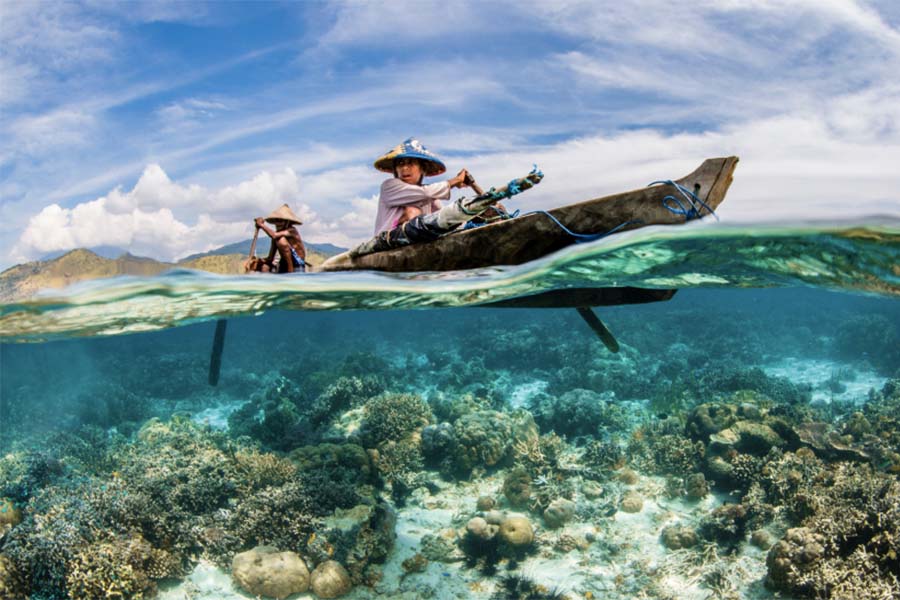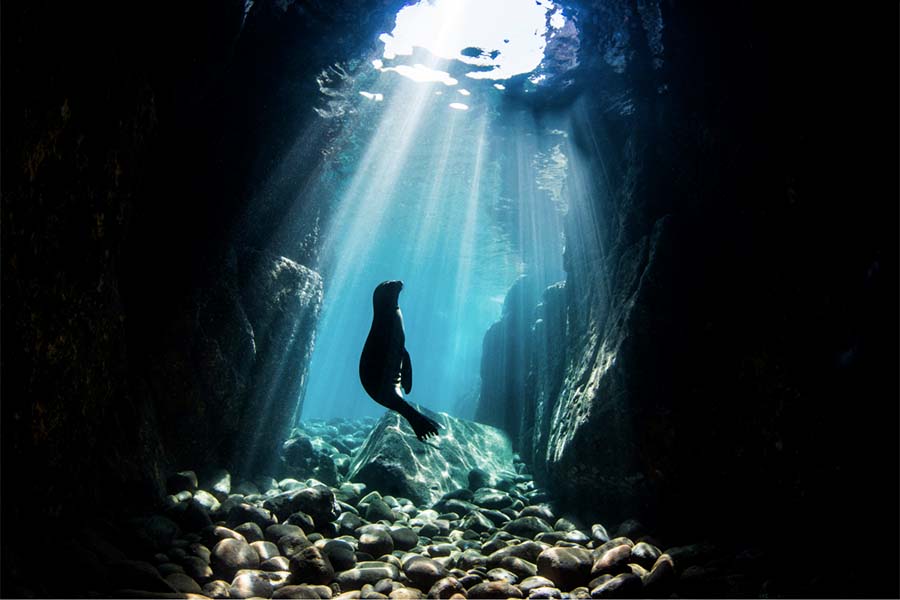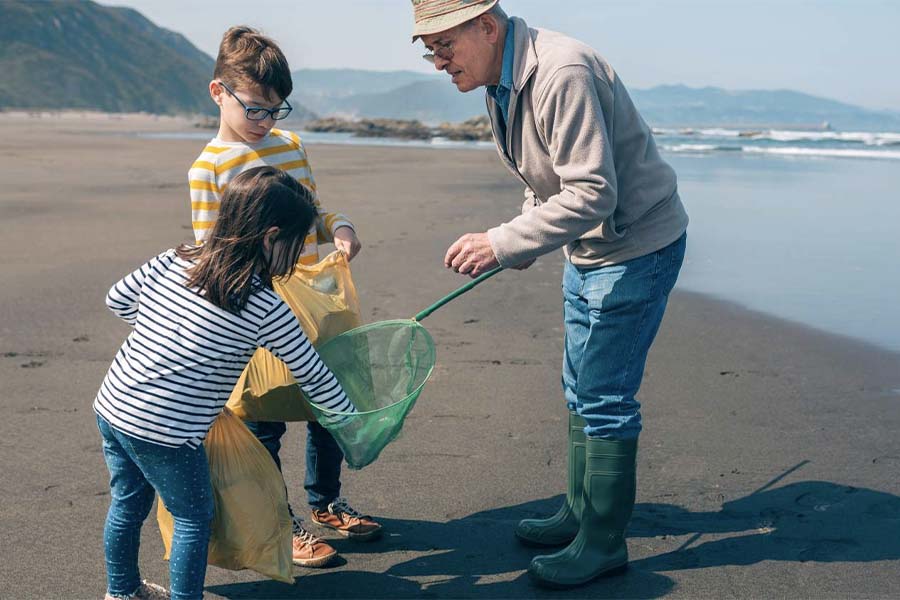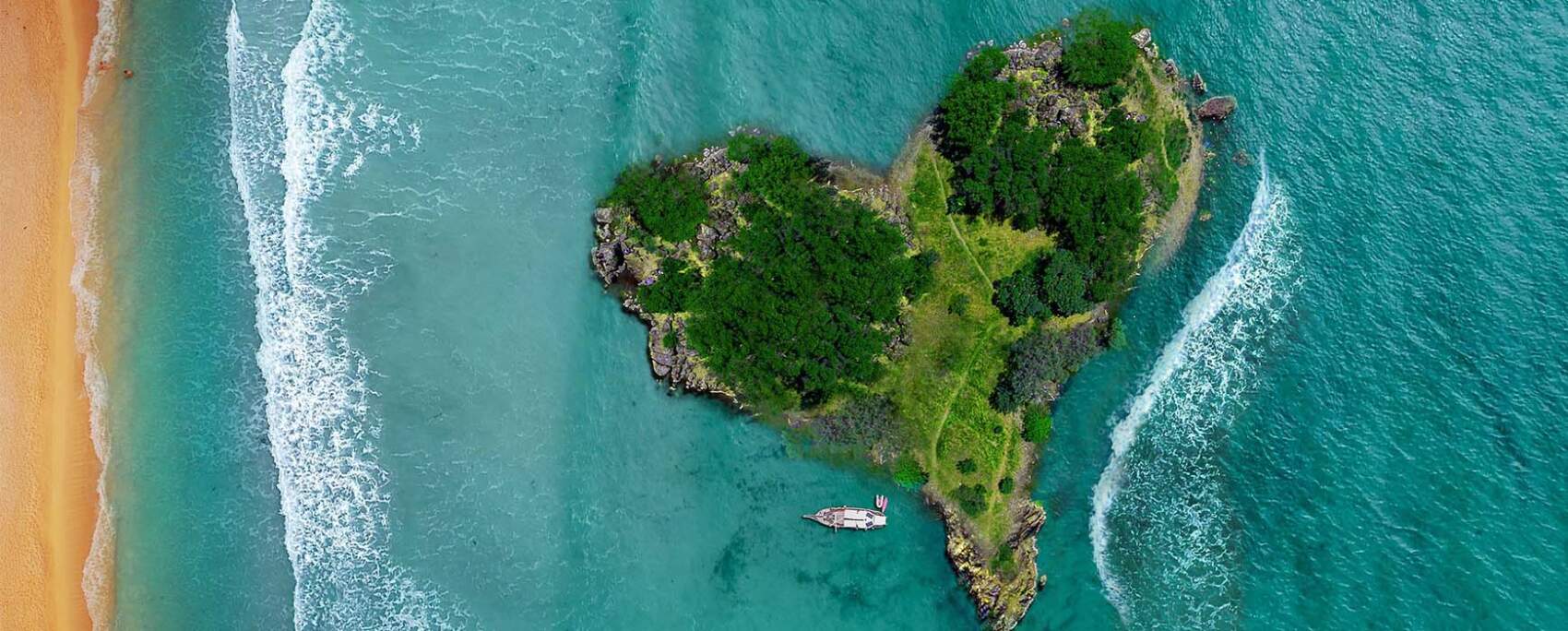Introduction
A healthy ocean is vital to the livelihoods of billions of people, especially those living on islands and in coastal areas. The ocean covers 70% of our planet’s surface area, yet only 1% of that is protected by national parks. The rest is home to over 30 million species, many of which are threatened by human-caused climate change, overfishing, and growing levels of pollution, including massive quantities of single-use plastic. Protecting the ocean has never been more important.
The United Nations celebrates Oceans Day every year. It was first declared on 8 June, 1992 in Rio de Janeiro at the Global Forum, a parallel event at the United Nations Conference on Environment and Development (UNCED) which provided an opportunity for non-government organizations (NGOs) and civil society to express their views on environmental issues. On this day, we have the opportunity to raise awareness of the benefits that humankind drives from the ocean and our duty to use its resources sustainably.

Photo: Renee Capozzola, USA – Winner at the 2022 UN World Oceans Day Photo Competition
The value of a living ocean
For small island developing States (SIDS) and coastal least developed countries, marine resources are critical assets, providing countless benefits in the form of food security and nutrition, employment, foreign exchange, culture and recreation. Through evidence-based policy interventions, these assets can also make enhanced and sustained contributions to the economic growth, welfare and prosperity of island communities.
The ocean makes a large and growing contribution to the global economy, driving growth in economic activity, jobs, innovation and business opportunities. The value of the blue economy is an estimated US$2.5 trillion annually, equivalent to the world’s seventh-largest economy. The OECD projects the ocean’s contribution to the global economy to double in size by 2030 compared with 2010 levels.
Global ocean assets are valued at US$24trn
Value of ocean-related activities and assets (2015, US$ trillion)

Source: WWF
However, the blue economy is more than the ocean economy. By “blue economy” we mean a sustainable ocean economy that harnesses marine ocean resources for long-term economic development and social prosperity while protecting the environment in perpetuity. Hence, the blue economy is about harnessing opportunities for creating jobs, income and growth, but also restoring ocean health—from accelerating blue carbon projects, sustainable aquaculture and ocean energy to decarbonising shipping and building a circular economy for plastics.
Revitalization: Collective Action for the Ocean
This year, the theme of the UN World Oceans Day is Revitalization: Collective Action for the Ocean. The goal is to shed light on the communities, ideas and solutions that are working together to protect and revitalize the ocean and everything it sustains. We know we must come together to protect the marine resources we all rely on. As caretakers of our local coastlines, the Island Innovation team invites you to celebrate with us.

Photo: Nur Tucker, United Kingdom – Winner at the 2022 UN World Oceans Day Photo Competition
7 Ways to Celebrate the World Oceans Day
Oceans absorb about 30% of carbon dioxide produced by humans, buffering the impacts of global warming. Over three billion people depend on marine and coastal biodiversity for their livelihoods. To ensure the health and safety of future generations, we must care for the ocean as it cares for us. The ocean needs us not only today, but every single day. Here are 7 actions you can take to protect and celebrate the ocean today, tomorrow and every day:
1. Read the United Nation’s Lazy Person’s Guide to Saving the Ocean
Everyone can do their part to reverse the decline of the Ocean. Every human on earth — even the most indifferent person among us — can be part of the solution. Fortunately, there are some easy things we can adopt into our routines that, if we all do it, will make a big difference. Read more about the Lazy Person’s Guide to Saving the Ocean here.
2. Skip the Seafood (and Meat)
In many areas of the world, seafood is a traditional and vital element of the diet, particularly in developing island nations and coastal towns. According to the United Nations Food and Agriculture Organization, fish and shellfish can account for up to 50% of inhabitants’ total animal protein diet in certain areas. Seafood contributes to 17% of all animal protein consumed globally and 6.7% of all protein consumed yearly.
The rising demand for seafood is intensifying damaging fishing techniques and marine animal bycatch. Health experts say eating many kinds of seafood regularly can be part of a healthy diet. But some fish are better choices than others. Eating sustainably caught fish and shellfish that are low in mercury — or that are sustainably farmed — can provide a good source of protein and omega-3 fatty acids to the diets of most healthy people, according to the U.S. Environmental Protection Agency.
3. Don’t drive! Walk, bike or even swim to work
Unnecessary driving contributes significantly to global warming. It is, in fact, the single most significant contributor to global warming. Experts agree that automobiles contribute 26% of all man-made greenhouse gas emissions into the environment. Energy generation, on the other hand, accounts for only 25% of the carbon footprint. If we want to save our planet, we must begin to reduce the amount of time we spend driving.
4. Stop using plastic and reduce your junk
Every year, eight million metric tons of plastic trash is thrown into our seas. This much is the equivalent of roughly 57,000 blue whales, weighing 17.6 billion pounds. If current trends continue, it is estimated that ocean plastic would exceed all of the ocean’s fish by 2050. Indeed, there is so much trash at sea that massive garbage piles have accumulated all around the planet. The Great Pacific Garbage Patch, the largest of them all, is located between Hawaii and California and is believed to contain 1.8 trillion pieces of trash, some of which is over 50 years old!
The sun and the action of the waves break down the trash in the water into tiny bits known as microplastic. Once broken down, it enters the food chain, posing a threat to both people and marine life. We’ve seen how harmful plastic can be to the ocean, but by using less plastic items, we can mitigate these consequences. For instance, have a reusable water bottle on hand, store food in non-disposable containers, shop with a reusable cloth bag, and recycle wherever feasible!
5. Organize a beach cleanup
One of the most successful methods to raise awareness about plastic pollution is through neighborhood cleanups. This is because this kind of activity allows people to be in contact with ocean plastic and observe for themselves what sort of rubbish is there. Seeing the products we use every day as environmental litter can give us a whole new perspective on the impact of our consumption habits that inspires us to rethink our relationship with plastic.
No matter how small your cleanup is, no matter how many people join, even if it’s just you, you’re making a bigger impact than you think because you’re never acting alone. For a comprehensive clean-up guide, download the Beach and Waterways Cleanups Guide available from the National Oceanic and Atmospheric Administration’s Marine Debris Program.

6. Support organizations working to protect our oceans
In recent years, there has been a profusion of organizations striving to conserve and safeguard our seas on both a public and political level. Joining one of these organizations and giving to the cause is one of the most effective ways to help marine conservation. Here is a list of some of the most prominent ocean conservation organizations in the world:
- Oceana
Oceana is the largest organization in the world solely devoted to marine conservation. As part of its campaigns, Oceana is involved in efforts to end major sources of ocean pollution such as oil, mercury, aquaculture and shipping emissions. - The Ocean Conservancy
The Ocean Conservancy is a leading advocacy group working for the protection of special marine habitats, the restoration of sustainable fisheries, and for reducing the human impact on ocean ecosystems. - The Nature Conservancy
The Nature Conservancy is one of the oldest and most respected conservation organizations in the world. Established in 1951, the organization has over 1 million members and works to protect ecologically important lands and waters at the largest scale. - World Wildlife Fund
The World Wildlife Fund (WWF) works in 100 countries and is supported by more than five million members globally.
7. Join the Island Pavilion at the UN Ocean Conference
The Island Innovation team will be on the ground at the 2022 UN Ocean Conference, providing live coverage and synopsis to connect islands around the world to what’s happening in Lisbon.
Our community is spread globally, and we want to ensure everyone has the opportunity to benefit from the discussions taking place on the future of the ocean, especially those living on islands and coastal areas. During the Conference, we are going to present our virtual “Island Pavilion” where we will share key insights related to remote, rural and island communities and provide resources for both those physically attending and those following online.
The UN Ocean Conference is an international event that has the potential to turn the tide on ocean conservation. Register now to receive the most relevant information, updates, and news from our team on the ground. The registration is 100% FREE and grants you access to all the resources available in this hybrid event.
Conclusion
While islands have some of the world’s most biologically diverse marine ecosystems, the health of those ecosystems is often declining as a result of the combined effects of stressors such as pollution, climate change, biodiversity loss, and overfishing. Human activities are degrading coral reefs, seagrass beds, and mangroves. The cumulative effects of these pressures are only now becoming clear.
Everyone, especially those living in island communities, can contribute to marine conservation through simple actions as the one listed in this article. The ocean health is at a tipping point and so is the well-being of all that depends on it. We need to work together to create a new balance with the oc




